Do Squats Work Lower Back? How to Engage It Safely
Author:
Reviewed by:
(Certified Nutritionist, S&C specialist, M.Sc.Eng. Biotechnology)
Unlock your full potential by engaging with our experts and community! Have questions about your fitness journey or looking for expert advice on weightlifting techniques? Don’t hesitate — leave a comment below and Ihor Shymechko will provide a personalized answer and insights to help you reach your goals.
Torokhtiy is reader-supported. Some links are affiliate links, and we may earn a commission at no extra cost to you. See our disclosure page for details.
Dive into the depth of the squat and it’s surprisingly ally – lower back. This article illuminates do squats work lower back. And yes, they are crucial allies in fortifying your lower back. Whether you are a seasoned athlete, or someone who just wants to lift life`s daily loads with ease, understanding the relationship between squats and lower back health is essential.
Do squats work lower back? Yes, squat exercise engages the lower back, particularly the erector spinae muscles which stabilize the core during the movement, contributing to overall back strength and posture when performed with proper form.
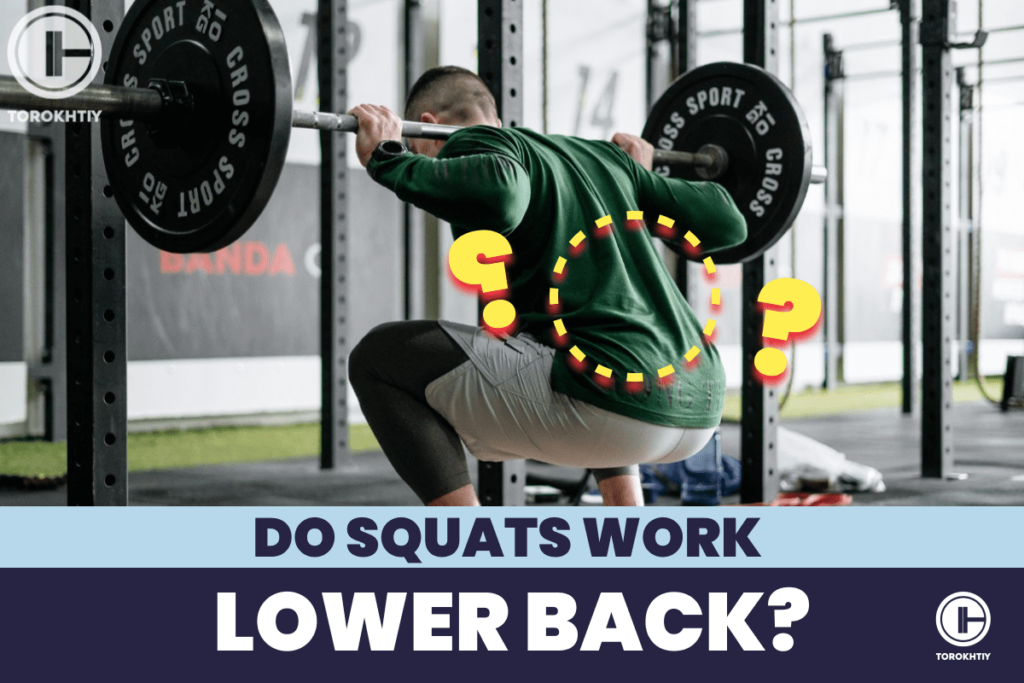
We will guide you through the biomechanics of how squats work the lower back and share key insights into harnessing this exercise for a stronger, more resilient spine. Join us on this exploration to solidify your squat and safeguard your back.
Anatomy of the Squat
Squats are a fundamental exercise that epitomizes the term “compound movement”. These dynamic actions call upon a symphony of muscles and joints to work in concert, exemplifying the complexity and efficiency of the human body.
As one of the most effective movements in strength training, understanding the anatomy of squat is essential for both maximizing its benefits and minimizing the risk of injury.
The intricate mechanics and muscle involvement require a focus on form, making the squat, not just an exercise, but the skill that enhances overall athletic performance and functional fitness.
1. Squat Biomechanics
The biomechanics of squats are intricate and demand proper alignment for both safety and effectiveness. As a lifter descent into a squat, the hips and knees flex, while the ankle joints dorsiflex.
The torso maintains an upright position to counterbalance the weight, ensuring the spine remains neutral. This alignment is pivotal to distribute the load effectively, minimize the risk of injury and engage the intended muscle groups optimally.
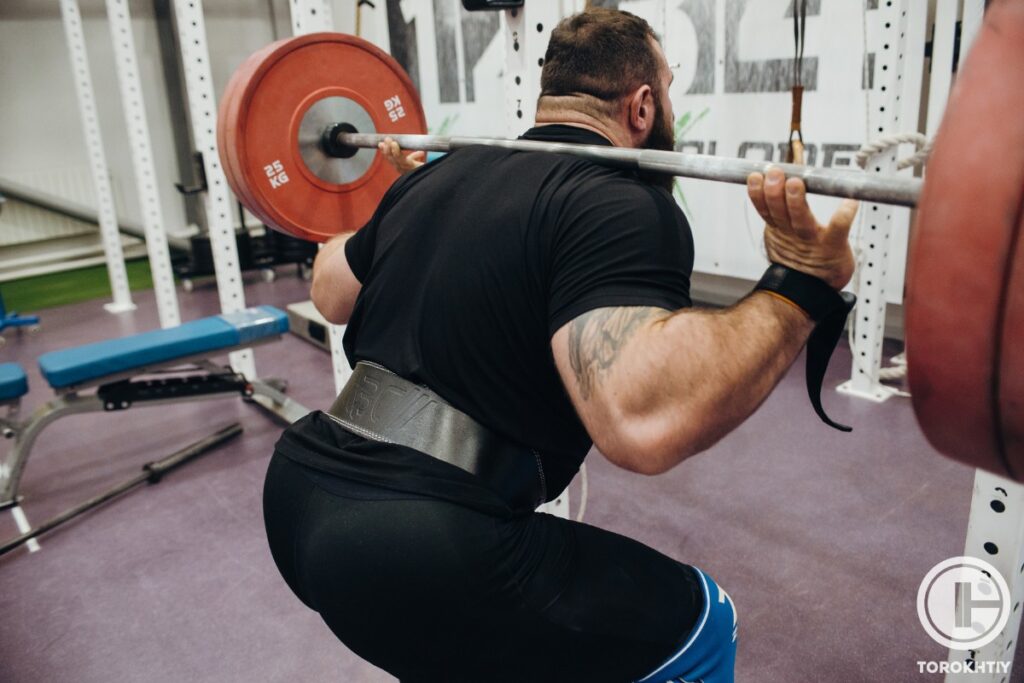
2. Muscles Involved In The Squat Exercise
The squat, while commonly known for targets in the lower body, is a comprehensive exercise, engaging the wide array of muscles. At the forefront are the quadriceps and glutes, which power the ascent from the squat. However, this movement also significantly involves the core, particularly the erector spinae muscles for the lower back.
These muscles act as stabilizers maintaining the spine’s integrity throughout the movement. Furthermore, the adductors, hamstrings and calves, play supporting roles, assisting in the movement and stabilization.
Thus, squat not only builds lower body strength, but also engages core stabilizers, reinforcing the lower back and enhancing overall strength and stability.
Follow us!

Free!
Get a 2-week Weightlifting Program as a bonus for the subscription to kickstart your training plan!

Free!
Lower Back Engagement In The Squat
Embarking on the core of our squat discussion, we delve into the critical role of the lower back. As the lynchpin in the kinetic chain of this powerful exercise, the engagement of the lower back is both inevitable and necessary. It’s where correct form and function converge to create a safe and effective squat.
Ignoring the lower back`s involvement can lead to compromised performance and higher risk of injury underscoring its importance not just for lifting prowess, but for the longevity of the one`s lifting journey.
1. Importance Of Lower Back Muscles for The Squat
The lower back plays a pivotal role in the squat by supporting the spine and maintaining an upright posture. This area of the body is engaged through the erector spinae muscles, which are responsible for extending the spine and keeping it stable under the load.
A strong lower back thus becomes a cornerstone for executing squats effectively, allowing for a heavier lift and more significant performance gains.
Strengthening the lower back muscles can improve overall squat mechanics, reducing the risk of compensatory movements that can lead to injury.
2. Potential Stress on The Lower Back
While squats can strengthen the lower back, they can also be a source of strength and strain if not performed correctly. Excessive loads or poor squat form can cause the lower back to round or hyperextend, placing abnormal pressure on the spinal disc and ligaments.
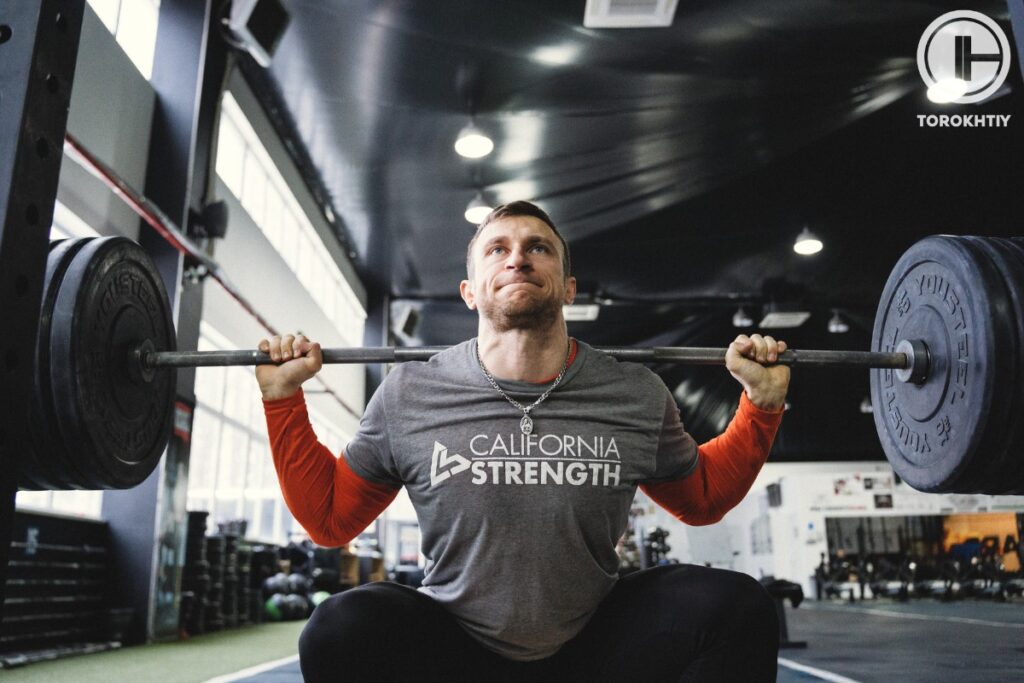
This undue stress can result in acute pain or long-term issues such as herniated discs or chronic lower back pain. Therefore, it is crucial to ensure proper form and to avoid overloading, especially without adequate progression and lower back conditioning.
3. Common Causes of Lower Back Stress During Squats
Lower back stress during squats often arises from common errors such as inadequate warm-up, which leaves the muscle stiff and less responsive to the demand of squatting. Poor form, including insufficient depth, incorrect foot positioning or lack of thoracic extension can shift the burden excessively to the lower back.
Imbalanced strength where the posterior chain is weaker than the anterior muscles also contribute to lower back strain as the body tries to compensate for the imbalance. Recognizing these factors is essential for safe squat practice for the long-term health of the lower back.
3 Benefits of Squats for Lower Back Health
So, do squats strengthen lower back? Squats, when executed with precision and care are not merely leg workouts. They offer a robust foundation for lower back health by engaging the entire posterior chain, which includes the muscles supported in the spine. Regular squatting can lead to an array of benefits that extends far beyond the gym.
✅ Full-Body Engagement
The act of squatting encompasses more than just the up and down movement. It’s a full-body engagement that offers substantial rewards to the lower back. When performed with proper form, squats can help to reinforce the muscles that scaffold the spine, leading to an improvement in posture, both during athletic activities and in daily life.
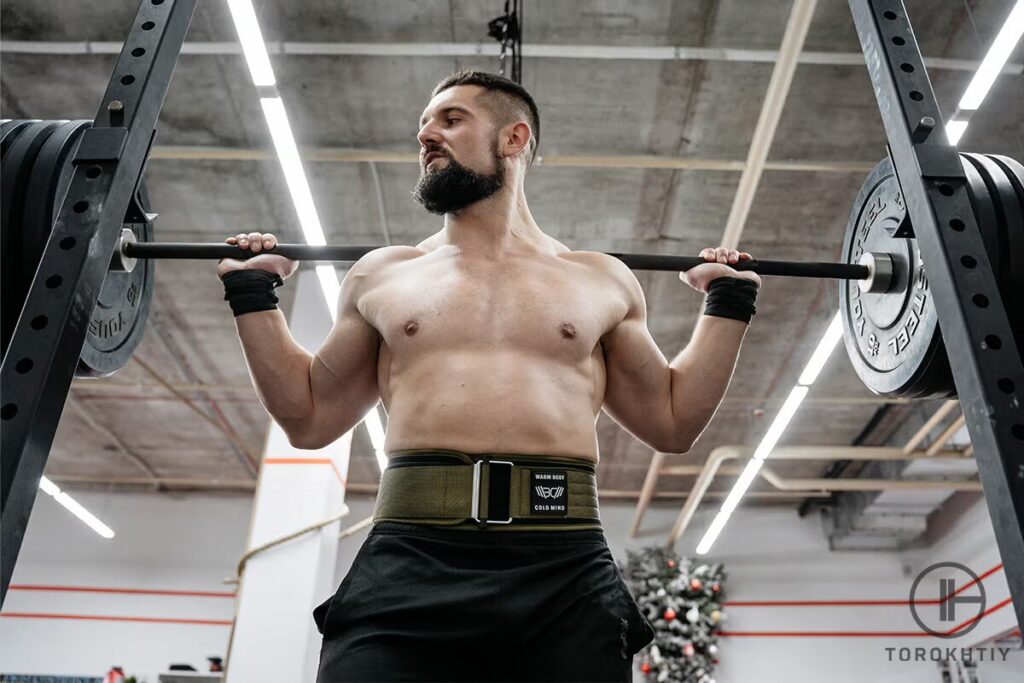
As the erector spinae muscles and the supporting core musculature are strengthened, there is a noticeable reduction in the occurrence of lower back pain, a common sign in today’s increasingly sedentary life.
✅ Functional Capacity Enhance
Moreover, the fortification of lower back muscles through squatting enhances the body’s functional capacity. This is particularly evident in the ability to perform everyday tasks with ease – bending to pick up groceries or maintaining a healthy posture while sitting at the desk.
For individuals with chronic lower back issues, integrating squats in their exercise regimen, with the guidance of professionals, can lead to a marked decrease in discomfort and an increase in quality of life.
✅ Injuries Prevention
Additionally, the improved stability and strength in the lower back, have a cascading effect, aiding in the prevention of injuries during other exercises, and in day-to-day movements. The lower back becomes more resilient and better equipped to support the spine under various loads, a benefit that cannot be overstated.
In essence, squats serve as a cornerstone exercise that promotes a resilient and robust lower back, ensuring that this pivotal area of the body remains strong, supple and less susceptible to injury.
Therefore, incorporating squats into a regular fitness routine can be a strategic move for anyone looking to enhance their overall physical health, particularly the health of their lower back. And this is the answer on – are squats good for lower back pain.
🔻GET A FREE PROGRAM DEMO: 12 Week Squat Program by Oleksiy Torokhtiy
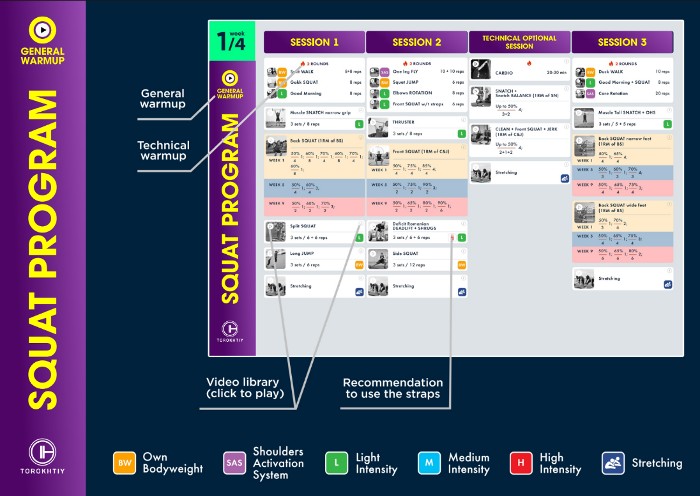
Do you want to double your squat strength? In just 12 weeks, you’ll be able to boost your squat results.
Enter your details and get a free demo (1 free week) of the squat program straight into your inbox.
Safe Squatting
Approaching squats with a safety-first mindset is not only wise, but also vital for long-term lifting success and overall spinal health. This practice encompasses understanding and harnessing motor control, ensuring ample mobility and promoting stability throughout the movement.
1. Motor Control, Mobility, Stability
Safe, squatting is grounded in the trinity of motor control, mobility and stability. Motor control ensures precise movement patterns, which are crucial for engaging the correct muscles and maintaining alignment.
Mobility, particularly in the hips, ankles and thoracic spine allows for a full range of motion, preventing compensatory patterns that could put undue stress on the lower back.
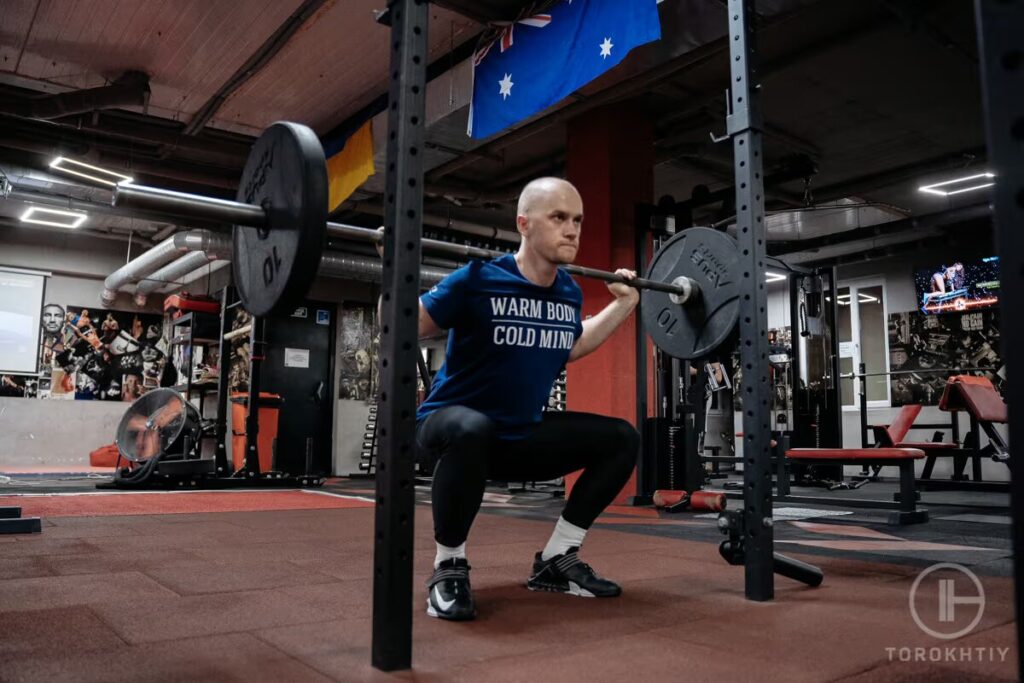
Stability, especially core stability, safeguards the spine as the body moves under the weight. These elements are intertwined: each one supports and enhances the others creating a foundation on how to strengthen lower back for squats.
2. Speed and Load
The interplay between speed and load during a squat directly impacts lower back safety. Controlling the speed of the descent and ascent prevents momentum from dictating the movement, ensuring that muscles, not laments or joints, absorb the load.
Similarly, the amount of weight lifted must be appropriate for the individual`s strength and skill level to maintain proper form throughout the exercise. Incremental increases in load allow the body to adapt safely, building strength without compromising the lower back.
It is through this careful calibration of speed and load that one can practice safe squatting, enhancing strength gains while safeguarding the body’s structural integrity.
FAQ
Should I Stop Squatting if My Lower Back Hurts?
If your lower back hurts during or after squats, it’s essential to stop and assess your technique and the weight used. Consult a fitness professional, or a healthcare provider to identify the cause of the pain and to make necessary adjustments to your routine.
How Many Squats Should I Do a Day?
The number of squats to do daily varied based on fitness goals, experience and strength. For general fitness, a moderate amount of 3 sets of 8-15 reps can be beneficial. It’s crucial to prioritize health and listen to the body`s response.
Conclusion
Squats are not just a leg exercise, they are comprehensive movements that can enhance your lower back strength and overall health when performed correctly.
Remember to prioritize form, control and safety to reap the full benefits. Have thoughts or personal experiences with squats and lower back health? Share in the comments below – we would love to hear how squats have impacted your fitness journey.
References
- Knopfli C, Achermann B, Oberhofer K, Lorenzetti SR. First Insights in the Relationship between Lower Limb Anatomy and Back Squat Performance in Resistance-Trained Males and Females. Bioengineering (Basel). 2023 Jul 21;10(7):865. doi: 10.3390/bioengineering10070865. PMID: 37508892; PMCID: PMC10376130.
- Kojic F, Ðurić S, Ranisavljev I, Stojiljkovic S, Ilic V. Quadriceps femoris cross-sectional area and specific leg strength: relationship between different muscles and squat variations. PeerJ. 2021 Nov 26;9:e12435. doi: 10.7717/peerj.12435. PMID: 34900415; PMCID: PMC8628634.
- Park JH, Lee SJ, Shin HJ, Cho HY. Influence of Loads and Loading Position on the Muscle Activity of the Trunk and Lower Extremity during Squat Exercise. Int J Environ Res Public Health. 2022 Oct 18;19(20):13480. doi: 10.3390/ijerph192013480. PMID: 36294056; PMCID: PMC9602963.
- Miñambres-Martín D, Martín-Casas P, López-de-Uralde-Villanueva I, Fernández-de-Las-Peñas C, Valera-Calero JA, Plaza-Manzano G. Physical Function in Amateur Athletes with Lumbar Disc Herniation and Chronic Low Back Pain: A Case-Control Study. Int J Environ Res Public Health. 2022 Mar 21;19(6):3743. doi: 10.3390/ijerph19063743. PMID: 35329430; PMCID: PMC8953459.
- Sasaki S, Tsuda E, Yamamoto Y, Maeda S, Kimura Y, Fujita Y, Ishibashi Y. Core-Muscle Training and Neuromuscular Control of the Lower Limb and Trunk. J Athl Train. 2019 Sep;54(9):959-969. doi: 10.4085/1062-6050-113-17. Epub 2019 Aug 6. PMID: 31386583; PMCID: PMC6795098.
- Photos made by Torokhtiy Media Team.
Why Trust Us?
With over 20 years in Olympic weightlifting, strength training, nutrition coaching, and general fitness our team does its best to provide the audience with ultimate support and meet the needs and requirements of advanced athletes and professional lifters, as well as people who strive to open new opportunities and develop their physical capabilities with us.
By trusting the recommendations of our certified experts in coaching, nutrition, and sports training programming, as well as scientific consultants, and physiotherapists, we provide you with thorough, well-considered, and scientifically proven content. All the information given in the articles concerning workout programming, separate exercises, and athletic performance, in general, is based on verified data.
The product testing process is described in more detail here.
Author: Ihor Shymechko
Pro Olympic Weightlifter, Coach
Best Results: Snatch – 208 kg,
C&J – 240 kg
Ihor has been a professional weightlifter since 1996, boasting over two decades of competition experience. His notable achievements include clinching the European Championship in 2009 and securing a silver medal in the 105kg division at the Senior World Championships in 2011. Ihor represented his country in the 2008, 2012, and 2016 Summer Olympics. After retiring from competitive weightlifting, he transitioned to coaching, leveraging his vast experience to guide athletes who now compete on both national and international stages.
Reviewed by: Jacek Szymanowski
Certified Nutritionist,
M.Sc.Eng. Biotechnology
Performance architect,
Strength and Conditioning Specialist
With over 30 years of fighting experience, specialization in nutrition coaching for athletes, and expertise in metabolic health and dietary strategies, Jacek offers a comprehensive approach to optimizing your performance and well-being. Backed by a Master of Science degree in Biotechnology, Jacek remains at the forefront of scientific advancements, ensuring that his coaching is always evidence-based and up-to-date.




Still have questions after reading our article? Unlock your full potential by engaging with our experts and community! Don’t hesitate — leave a comment below and Ihor Shymechko will provide a personalized answer and insights to help you reach your goals.